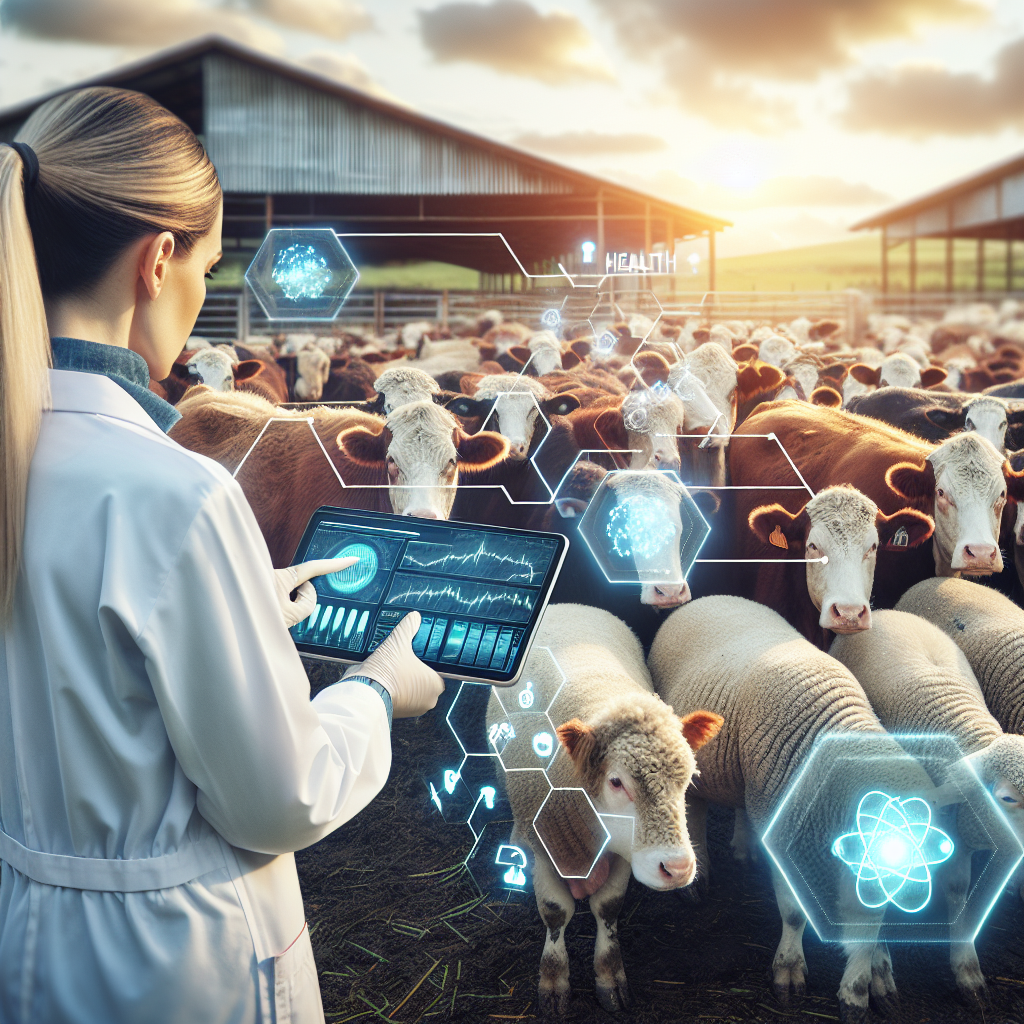With the rise of technology, artificial intelligence (AI) has become an increasingly important tool in various industries, including agriculture. In the livestock sector, AI can be used for disease prevention and control to improve animal health and welfare, reduce economic losses, and ensure food safety. By leveraging AI technologies, farmers and veterinarians can detect, monitor, and manage diseases more effectively, ultimately leading to better outcomes for both animals and humans.
One of the key benefits of using AI for livestock disease prevention and control is its ability to analyze large volumes of data quickly and accurately. By processing information from various sources, such as sensor data, electronic health records, and environmental factors, AI algorithms can identify patterns and trends that may indicate the presence of a disease outbreak. This early detection can help farmers and veterinarians take timely action to prevent the spread of the disease and minimize its impact on the livestock population.
AI can also be used to monitor the health and well-being of individual animals in real-time. For example, wearable devices equipped with sensors can collect data on vital signs, behavior, and activity levels, which can then be analyzed by AI algorithms to detect any deviations from normal patterns. This continuous monitoring allows farmers and veterinarians to identify sick animals early on and provide them with the necessary care and treatment, reducing the risk of disease transmission and improving overall herd health.
In addition to monitoring individual animals, AI can also help farmers optimize their management practices to prevent diseases from occurring in the first place. By analyzing historical data on disease outbreaks, environmental conditions, and animal health records, AI algorithms can identify risk factors and develop predictive models to forecast potential disease events. This information can be used to implement targeted interventions, such as vaccination programs, biosecurity measures, and hygiene protocols, to reduce the likelihood of disease outbreaks and protect the livestock population.
Furthermore, AI can assist in the diagnosis and treatment of diseases by providing accurate and timely information to veterinarians. For example, AI-powered imaging systems can analyze medical images, such as X-rays and ultrasound scans, to detect abnormalities and assist in the diagnosis of conditions like pneumonia, arthritis, and tumors. This can help veterinarians make informed decisions about the best course of treatment for sick animals, leading to better outcomes and reduced mortality rates.
Overall, the use of AI for livestock disease prevention and control offers numerous benefits, including improved disease detection, real-time monitoring, predictive modeling, and decision support for veterinarians. By harnessing the power of AI technologies, farmers can enhance the health and welfare of their livestock, increase productivity, and ensure the sustainability of their operations in the long run.
FAQs:
Q: How does AI help in early disease detection in livestock?
A: AI algorithms can analyze large volumes of data, such as sensor data and health records, to identify patterns and trends that may indicate the presence of a disease outbreak. This early detection allows farmers and veterinarians to take timely action to prevent the spread of the disease and minimize its impact on the livestock population.
Q: What are some examples of AI applications in livestock disease prevention and control?
A: AI can be used for real-time monitoring of individual animals, predictive modeling of disease outbreaks, diagnosis and treatment assistance for veterinarians, and optimization of management practices to prevent diseases from occurring.
Q: How can farmers benefit from using AI for livestock disease prevention and control?
A: Farmers can benefit from improved disease detection, real-time monitoring, predictive modeling, and decision support for veterinarians, leading to better animal health and welfare, reduced economic losses, and increased productivity in their operations.
Q: What are some challenges in implementing AI for livestock disease prevention and control?
A: Some challenges in implementing AI for livestock disease prevention and control include the need for high-quality data, integration with existing systems, privacy and security concerns, and the cost of adopting new technologies. However, with proper planning and investment, these challenges can be overcome to reap the benefits of AI in the livestock sector.

